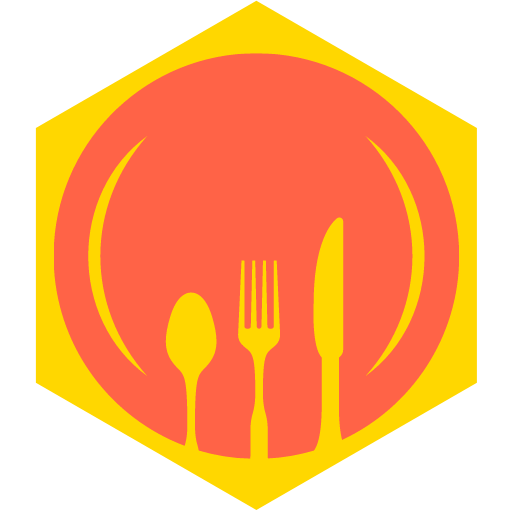The art of presenting a menu is as crucial as the culinary delights it offers. A Frame Menu Boards have become a staple in the hospitality and retail landscapes, transforming the way businesses communicate their offerings to customers.
These versatile display tools capture attention, convey information clearly, and enhance the overall ambiance. Whether placed outside a cozy café, inside a bustling restaurant, or at a food festival, the A Frame Menu Board serves as a powerful visual ambassador.
Its design balances functionality with aesthetics, making it easier for patrons to engage and make informed decisions. The ability to update content quickly and attractively keeps the experience fresh and inviting.
In an era where first impressions matter immensely, A Frame Menu Boards deliver a tangible, effective method to showcase specials, promotions, or full menus. They combine portability with durability, allowing business owners to adapt to changing environments effortlessly.
Beyond mere signage, these boards are a canvas for creativity and branding, reflecting the personality of the establishment. The impact of a well-crafted A Frame Menu Board extends beyond the written word, influencing foot traffic and customer satisfaction.
Understanding the multifaceted nature of A Frame Menu Boards reveals their potential as both marketing tools and functional assets. Their role in shaping customer experience is undeniable, blending practical features with design innovation.
Design and Materials
The design and choice of materials for A Frame Menu Boards significantly influence their effectiveness and longevity. Selecting the right combination ensures resilience against weather elements while maintaining an attractive appearance that complements the business’s style.
The structure must balance stability with portability to accommodate various locations and uses.
Typically, A Frame Menu Boards are crafted from materials such as wood, metal, or plastic, each offering unique advantages. Wooden frames provide a classic, rustic feel suitable for boutique cafés or traditional restaurants.
Metal frames, often aluminum or steel, are known for their durability and modern aesthetic, ideal for high-traffic urban areas. Plastic or composite materials cater to lightweight and cost-effective solutions, often favored for temporary or seasonal displays.
Beyond frame composition, the surface on which the menu is displayed plays a vital role. Chalkboard surfaces allow for handwritten, easily changeable content, while dry-erase or printed inserts offer clean, professional presentations.
The versatility in design caters to diverse branding needs and operational demands.
Material Comparison
| Material | Durability | Weight | Appearance | Cost |
| Wood | Moderate | Heavy | Classic and warm | Medium |
| Metal (Aluminum/Steel) | High | Moderate | Modern and sleek | High |
| Plastic/Composite | Moderate | Light | Varied, customizable | Low |
“Choosing the right material for your A Frame Menu Board is foundational to balancing aesthetics with practicality.”
Weather resistance is another critical factor in design. Boards exposed to outdoor conditions require protective coatings or materials to prevent fading, warping, or corrosion.
This ensures that the presentation remains crisp and appealing over time.
Visibility and Placement
Where and how an A Frame Menu Board is positioned can dramatically influence customer engagement. Visibility is paramount; the board must be placed where it naturally catches the eye of passersby without obstructing foot traffic.
Strategic placement enhances readability and invites interaction.
Effective placement considers the flow of pedestrian traffic, lighting conditions, and proximity to entrances. A well-placed board serves as a beacon, drawing customers inside and setting the tone for their experience.
It’s important to evaluate the surrounding environment to avoid distractions or obstructions that may diminish the board’s impact.
Height and angle adjustments contribute to optimal visibility. Boards placed too low may be overlooked, while those set too high can strain the reader’s line of sight.
Adjustable hinges or stands allow for customization depending on the location and audience demographics.
Visibility Tips
- Position near main entrances or sidewalks for maximum exposure
- Use lighting or reflective surfaces for evening visibility
- Ensure text size and contrast are suitable for distance reading
- Keep pathways clear to encourage stopping and viewing
“An A Frame Menu Board is only as effective as its placement; visibility turns signage into conversation starters.”
Seasonal adjustments in placement may be necessary. For example, during outdoor events or festivals, relocating boards closer to crowds or entrances can elevate engagement and sales opportunities.
Customization and Branding
Customization transforms an A Frame Menu Board from a simple display into a dynamic extension of a brand’s identity. Tailoring the design, color scheme, and typography aligns the board with the overall aesthetic, reinforcing brand recognition and customer loyalty.
Businesses can incorporate logos, taglines, and signature colors to create a cohesive look. This consistency strengthens the message and builds trust with customers.
Custom graphics and imagery add visual interest that encourages potential patrons to pause and absorb the offerings.
Moreover, the ability to update content easily allows brands to promote specials, new menu items, or events in real-time. This flexibility keeps the communication fresh and relevant, essential in a competitive market.
Elements of Effective Customization
- Color Palette: Choose colors that reflect brand identity and enhance readability
- Typography: Select fonts that match brand personality while remaining legible
- Graphic Elements: Incorporate logos, icons, or illustrations to support the message
- Material Finishes: Use textures and finishes that complement the brand’s style
Incorporating these elements ensures the board is not only functional but also a compelling marketing tool.
Ease of Use and Maintenance
Practicality is a cornerstone of effective A Frame Menu Boards. Ease of use means quick setup, simple content updates, and manageable storage.
These factors are especially important for businesses that frequently change menus or promotions.
Many boards feature interchangeable panels or writable surfaces, allowing staff to modify content without hassle. Magnetic or slide-in inserts offer clean, professional updates, while chalkboard or dry-erase options provide creative freedom and spontaneity.
Maintenance considerations include cleaning, protection from elements, and repair options. Choosing materials resistant to stains, scratches, and weather damage reduces upkeep effort.
Regular care extends the life of the board and maintains a polished appearance.
Maintenance Best Practices
- Wipe surfaces with appropriate cleaners regularly to avoid residue buildup
- Store indoors when not in use to protect from sun and moisture
- Check hinges and joints for wear and lubricate if necessary
- Replace worn or faded inserts promptly to maintain clarity
“The simplest boards often deliver the most impact when they combine ease of use with consistent upkeep.”
Choosing designs with modular components can simplify repair and customization, saving time and expense in the long run.
Cost Considerations and ROI
Investing in an A Frame Menu Board involves balancing upfront costs with long-term benefits. Understanding the price range and potential return on investment (ROI) helps businesses make informed decisions.
Factors influencing cost include materials, size, customization level, and additional features such as lighting or weatherproofing.
While premium materials and elaborate designs may carry higher initial costs, they often result in greater durability and enhanced brand perception. Conversely, budget options can serve temporary needs or test new locations without significant expenditure.
Calculating ROI includes evaluating increased foot traffic, boosted sales through effective promotions, and reduced marketing expenses by using the board as a multipurpose communication tool.
Cost vs. Benefits Table
| Cost Range | Material Quality | Lifespan | Customization Level | ROI Potential |
| Low ($20-$50) | Basic Plastic | 1-2 years | Limited | Moderate |
| Mid ($50-$150) | Wood or Metal Composite | 3-5 years | Moderate | High |
| High ($150+) | Premium Metal/Wood with Features | 5+ years | Extensive | Very High |
Return on investment is maximized when the board is used creatively and maintained well, turning a simple sign into an ongoing communication asset.
Environmental Impact and Sustainability
With growing awareness around environmental responsibility, many businesses consider the sustainability of their signage choices. A Frame Menu Boards can be designed and sourced with eco-friendly principles in mind, reducing their environmental footprint.
Opting for sustainably harvested wood, recycled metals, or biodegradable plastics supports green initiatives. Additionally, boards designed for reusability and longevity reduce waste from frequent replacements.
The ability to update menus without printing new materials further contributes to sustainability.
Some manufacturers offer recyclable or compostable components, aligning with corporate social responsibility goals and appealing to environmentally conscious customers.
Eco-Friendly Features to Consider
- Use of non-toxic paints and finishes
- Materials sourced from certified sustainable suppliers
- Modular designs for easy repair and part replacement
- Lightweight construction to minimize transportation emissions
“Sustainability in signage is no longer optional; it reflects a commitment to community and future generations.”
Choosing sustainable A Frame Menu Boards can also serve as a marketing point, showcasing a brand’s dedication to environmental stewardship.
Innovations and Trends
The evolution of A Frame Menu Boards reflects advances in technology and changing consumer preferences. Modern designs integrate digital elements, smart materials, and interactive features that enhance engagement and adaptability.
Digital A Frame boards with LED screens enable dynamic content that can be updated remotely, perfect for businesses with frequent menu changes or promotional events. Solar-powered lighting systems provide eco-friendly illumination for evening hours, increasing visibility without additional energy costs.
Additionally, magnetic and modular panels allow for quick swaps and creative layouts, keeping the display fresh and aligned with marketing campaigns. Some boards incorporate QR codes, linking customers directly to online menus or ordering platforms.
Emerging Features
- Remote content management via apps or Wi-Fi
- Solar-powered or battery-operated lighting
- Interactive touchscreens for customer input
- Augmented reality (AR) integrations for immersive experiences
These innovations position A Frame Menu Boards as not just signage but as sophisticated communication hubs.
Conclusion
A Frame Menu Boards are indispensable tools for businesses seeking to create compelling, accessible, and flexible communication with their customers. Their blend of design versatility, practical features, and branding potential makes them a cornerstone of effective signage strategies.
From material choices to placement and customization, careful consideration of each aspect can elevate customer engagement and drive sales.
The ability to balance cost, durability, and sustainability ensures these boards serve not only immediate marketing needs but also long-term operational goals. Innovations continue to expand their functionality, transforming traditional signage into interactive and dynamic canvases.
Embracing these developments allows businesses to stay ahead in competitive markets while reflecting their unique identity and values.
Ultimately, the success of an A Frame Menu Board lies in its thoughtful integration into the business environment and consistent upkeep. It acts as a silent salesperson, welcoming guests, guiding choices, and reinforcing brand presence.
Investing in quality, design, and strategic use of A Frame Menu Boards is an investment in enduring customer relationships and memorable dining experiences.

